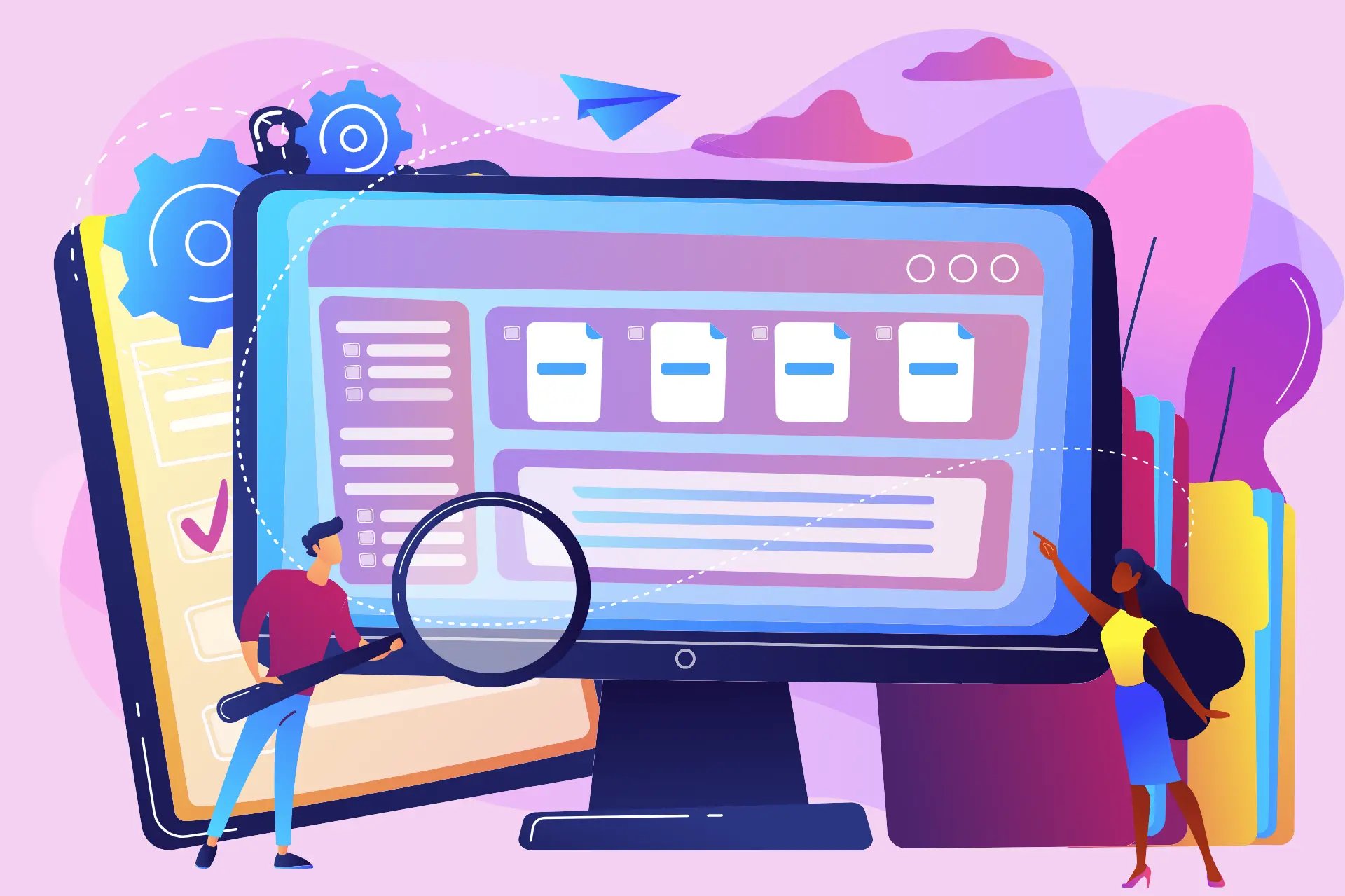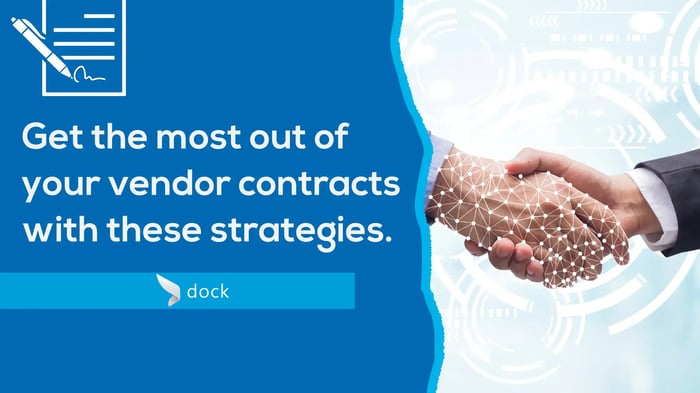
5 Ways To Improve Vendor Relationship Management
Vendor relationship management is imperative to the procurement process. It is essential to preserve the health and longevity of supplier relationships because they are the backbone of operations and directly affect revenue. Effective vendor relationship management can increase the likelihood of third-party relationships developing into long-term, profitable ventures. In addition, by prioritizing vendors, organizations can improve their outcomes.

However, given how quickly the marketplace is changing, the conventional approaches to managing vendor relations have become redundant and run the risk of confining an organization's supplier network to a small geographic area. That is why more and more businesses are looking for tailored solutions to manage their vendor relationships. In this blog post, we dive into how to improve vendor relationship management.
What is vendor relationship management?
Vendor Relationship Management (VRM) helps maintain healthy and trusting relationships between a company and its vendors or suppliers to achieve mutually beneficial results. It involves a wide range of activities, including identifying and selecting vendors, negotiating contracts, managing supplier performance, monitoring delivery schedules, and resolving any issues or conflicts that may arise. The goal is to maintain a positive working relationship with the suppliers while ensuring they deliver what the business requires.
Effective VRM can help a company reduce costs, improve quality, and increase customer satisfaction. It can also help to minimize risks associated with supplier relationships, such as supply chain disruptions, quality issues, or conflicts of interest. But efficient vendor relationship management requires careful planning, communication, and technology to succeed.
How To Improve Vendor Relationship Management
Since all vendors aren’t the same, organizations cannot adopt the same strategy to handle every business partnership. Effective vendor relationship management leverages an end-to-end system to centralize vendor onboarding, contracts, and communication. Contract lifecycle management (CLM) software with the add-on of a vendor portal enables organizations to manage the entire procurement process. It allows users to oversee the vendor lifecycle from within a single platform.
Enterprises can aggregate business data into the centralized system to scout, negotiate, and onboard suppliers. It streamlines the procurement process and makes it possible to keep positive partnerships with self-service portals, automated tracking, notifications, and the platform for real-time collaboration. Apart from a sophisticated platform, here’s how businesses can enhance vendor relationship management.
1. Construct a vendor relationship management strategy
Create a vendor relationship management plan that oversees the entire procurement process and supports your organization in avoiding compliance problems, missed dates, and document inaccuracies. Organizations can begin by identifying the vendors vital to their operations and assessing their performance using crucial metrics. Employing a CLM software solution enables organizations to monitor and extract contract performance data according to configured metrics and KPIs, giving you increased visibility of which agreements are most conducive and favorable to your business objectives. Constant performance monitoring also helps to develop contingency plans for supply chain disruptions, ensuring compliance with regulatory requirements and addressing potential conflicts of interest.
2. Create clear communication channels with your vendors
Vendor relationship management strategy should also include establishing effective communication channels with your vendors. Negotiating and drafting your vendor contracts requires a substantial back and forth. And while these processes involve lots of discussions, you must create a clear understanding of expectations, objectives, and priorities. Everybody must always be on the same page for effective vendor relationship management. Organizations can make that happen through regular meetings, performance reviews, and sharing scorecards. This step helps you determine which suppliers to continue to work with in the future. We recommend communicating with your vendors throughout the many stages of the contract lifecycle.
A successful vendor relationship management strategy must include providing your vendors with the transparency they need to perform. When third-party vendors understand the objectives and priorities of the business they are working with, there’s a higher likelihood of mutually beneficial business partnerships. You might also increase the number of successful renegotiations in the future.
3. Think in the long term
Building long-term relationships with your best vendors can result in results-driven renegotiations and a rise in high-value contracts. Consider how the partnership might benefit the company in the long run when researching, negotiating, and onboarding suppliers. With long-term vendor relationships, businesses can drive favorable contract terms, so what’s not to love? Contract management software solutions include vendor performance monitoring and vendor scorecard ranking capabilities. So, within the cloud-secure centralized repository, organizations can easily monitor vendor contracts, their statuses, and their performance to analyze contract trends. Analyzing vendor performance against your KPIs can help you make intelligent, data-driven decisions regarding which vendor relationships to hold tight to and which to let go of. When you work with vendors, try to find ways to create win-win situations. It could include offering them longer-term contracts, bulk orders, or introducing them to new clients. Evergreen agreements automatically renew after a specified period unless one party gives notice of termination. These agreements are particularly advantageous for businesses that rely on a consistent supply of goods or services. Instead of renegotiating contracts yearly, companies can focus on their core operations and maintain uninterrupted supplier relationships.
4. Fair and effective negotiation
A long-drawn-out and complicated negotiation can sour any vendor relationship. Before negotiating the contract terms, consider potential risks and opportunities related to the vendor. Opening up communication to include the perspective of the counterparty enables organizations to make informed decisions. With a collaborative, open-minded, and fair approach to contract negotiations, you can appropriately problem-solve and start working relationships off on the right foot.
A successful negotiation leaves all the parties satisfied, knowing that the contract at hand will drive profits and work to reach goals on the part of each party involved. We highly recommend that your procurement team enter into negotiations with goals about service, quality, pricing, and other areas relevant to your unique business needs. With contract management software, you can provide your procurement department with the best possible negotiation tools, supporting you in creating the contracts that will lead to business results and achieving goals that benefit your organization and your vendors.
5. Do annual vendor scorecards that include KPIs
Performance monitoring is a critical component of vendor relationship management, as it allows companies to establish compliance. Organizations can utilize sophisticated vendor scorecards to evaluate the performance of their suppliers or vendors. The scorecard typically includes various metrics that assess the vendor's performance, such as quality, delivery, pricing, and customer service. The scorecard's objective evaluation of the vendor's performance enables the company and the vendor to communicate and identify areas for improvement.
On-time delivery performance, defect rates, lead times, response times to questions or complaints, and general customer satisfaction ratings are some typical metrics that may be present in a vendor scorecard. Users can alter vendor scorecards to include particular KPIs based on a company's priorities.
Vendor scorecards are often used as part of a broader vendor management program, which involves developing relationships with suppliers that can help the company achieve its goals. By using vendor scorecards, companies can ensure that they are working with high-performing suppliers that meet their needs and contribute to their success.
Conclusion
Effective vendor relationship management involves several key activities, including vendor selection, contract negotiation, performance monitoring, and issue resolution. At Dock 365, we are conscious of the challenges involved in successfully managing vendor contracts and relationships. Organizations can use our solution, integrated with Office 365 and SharePoint, to digitally store and manage countless vendor agreements in a centralized, secure cloud repository, making vendor contracts available to authorized employees on mobile devices.
By keeping contractual agreements and associated data under one umbrella, users can easily monitor the status and performance of suppliers. This may involve regularly tracking delivery times, quality metrics, and customer service ratings. If issues arise, companies can use vendor relationship management processes to resolve these issues in a timely and effective manner. End-to-end contract management solutions with vendor portal improve turnaround times, contract accuracy, productivity, and organizational efficiency. In addition, a CLM software solution can support your vendor relationship by providing the add-on option for the vendor portal.
By implementing CLM software and developing a comprehensive vendor relationship management strategy, you can properly manage risk and increase the value of your vendor relationships. Thanks to automated alerts and reminders, organizations never have to worry about making late payments to vendors or missing important dates, milestones, or commitments. The number #1 way to build thriving relationships with your vendors is to ensure that everyone is on the same page regarding objectives, terms, and expectations, and CLM software can support you in doing just that.
Get a head start on optimizing your vendor contracts with Dock 365. We’ll support you with an intuitive, user-friendly contract lifecycle management (CLM) solution that will drive revenue, mitigate risk, and increase the value of your vendor relationships. If you’re ready to experience the benefits of contract management software for your business, we’re here to help you at Dock 365.
Book a Live demo
Schedule a live demo of Dock 365's Contract Management Software instantly.
.png?width=196&height=196&name=MicrosoftTeams-image%20(24).png)
Written by Deepti Gopimohan





